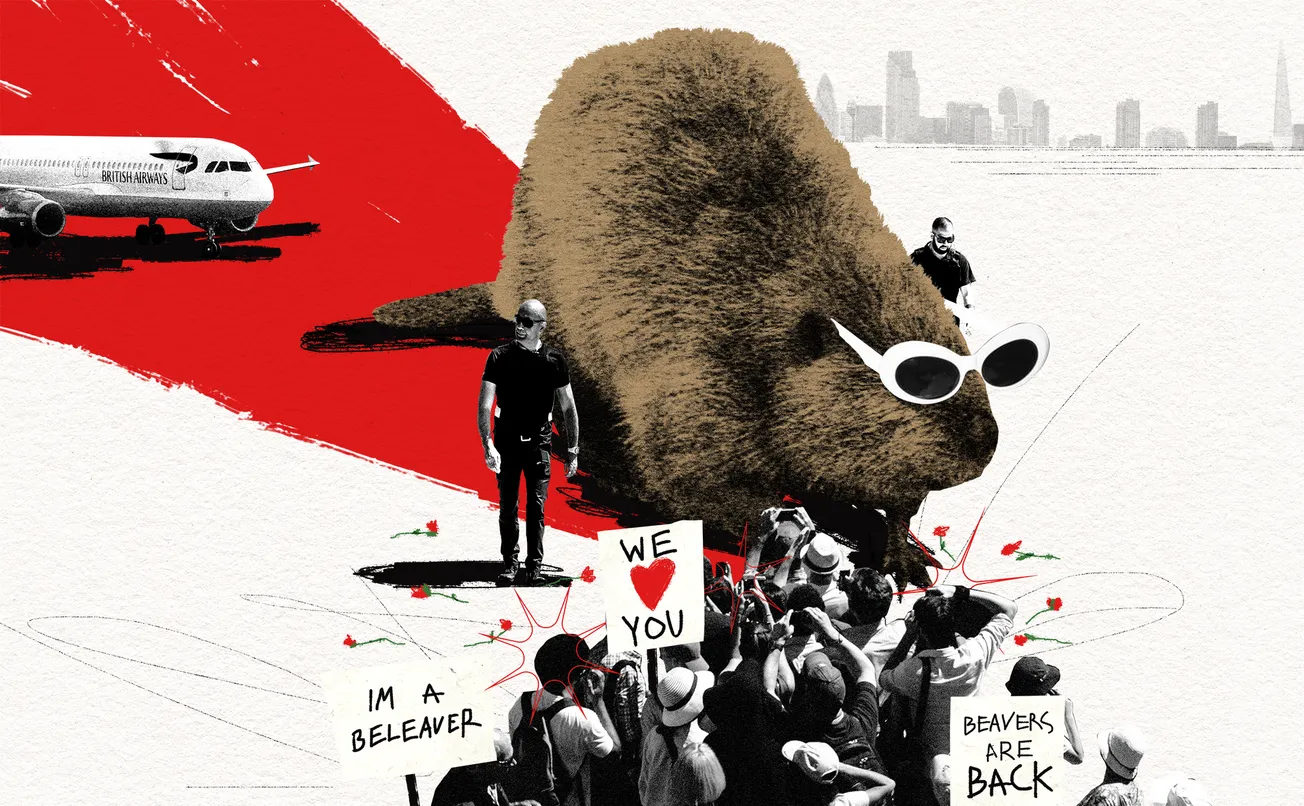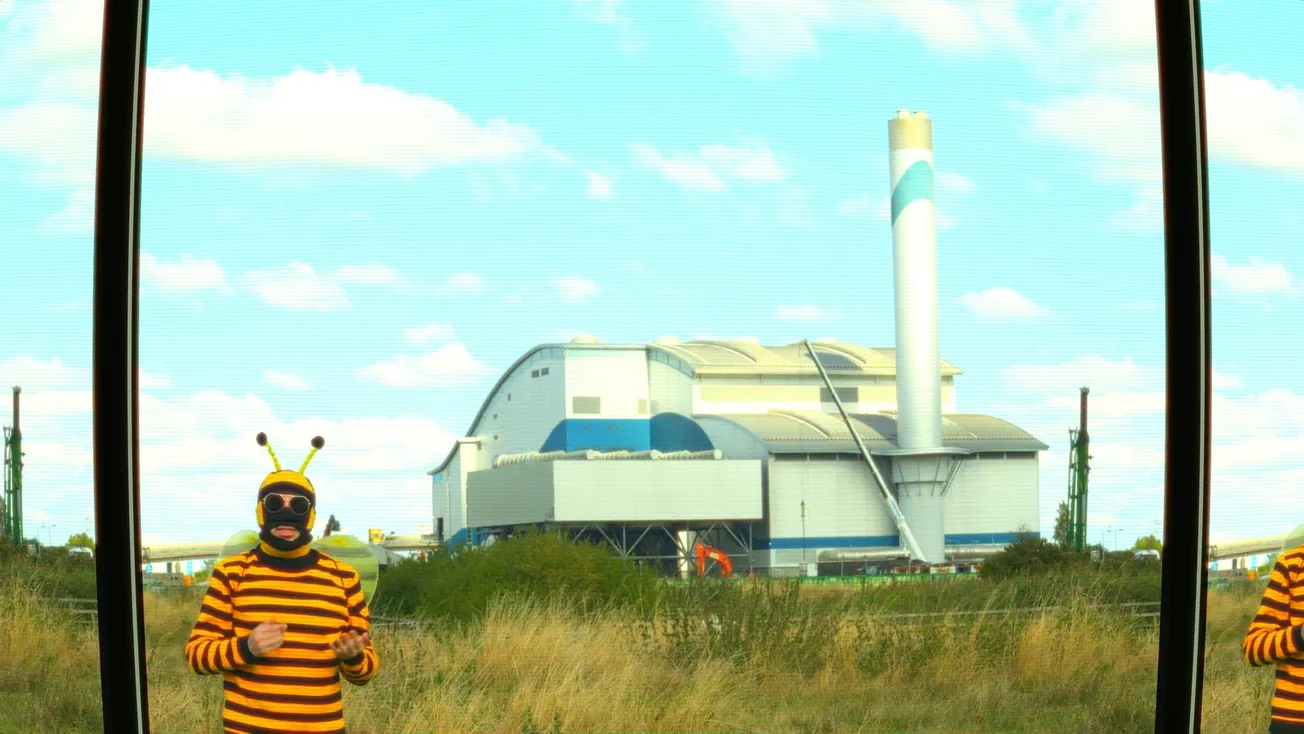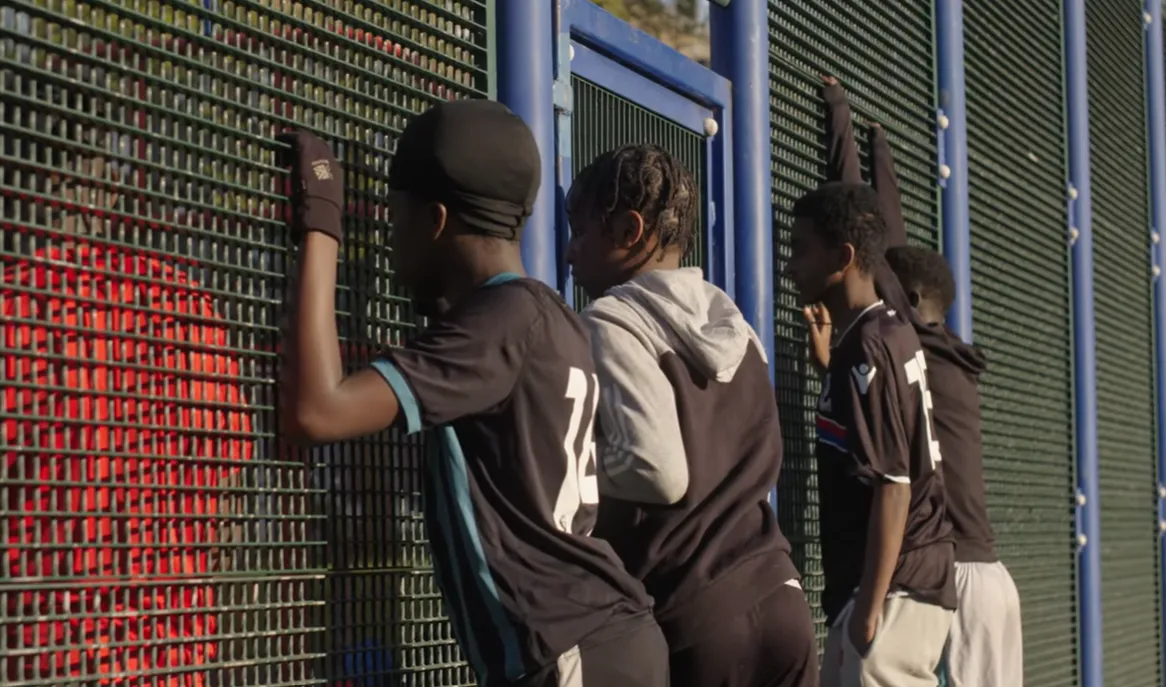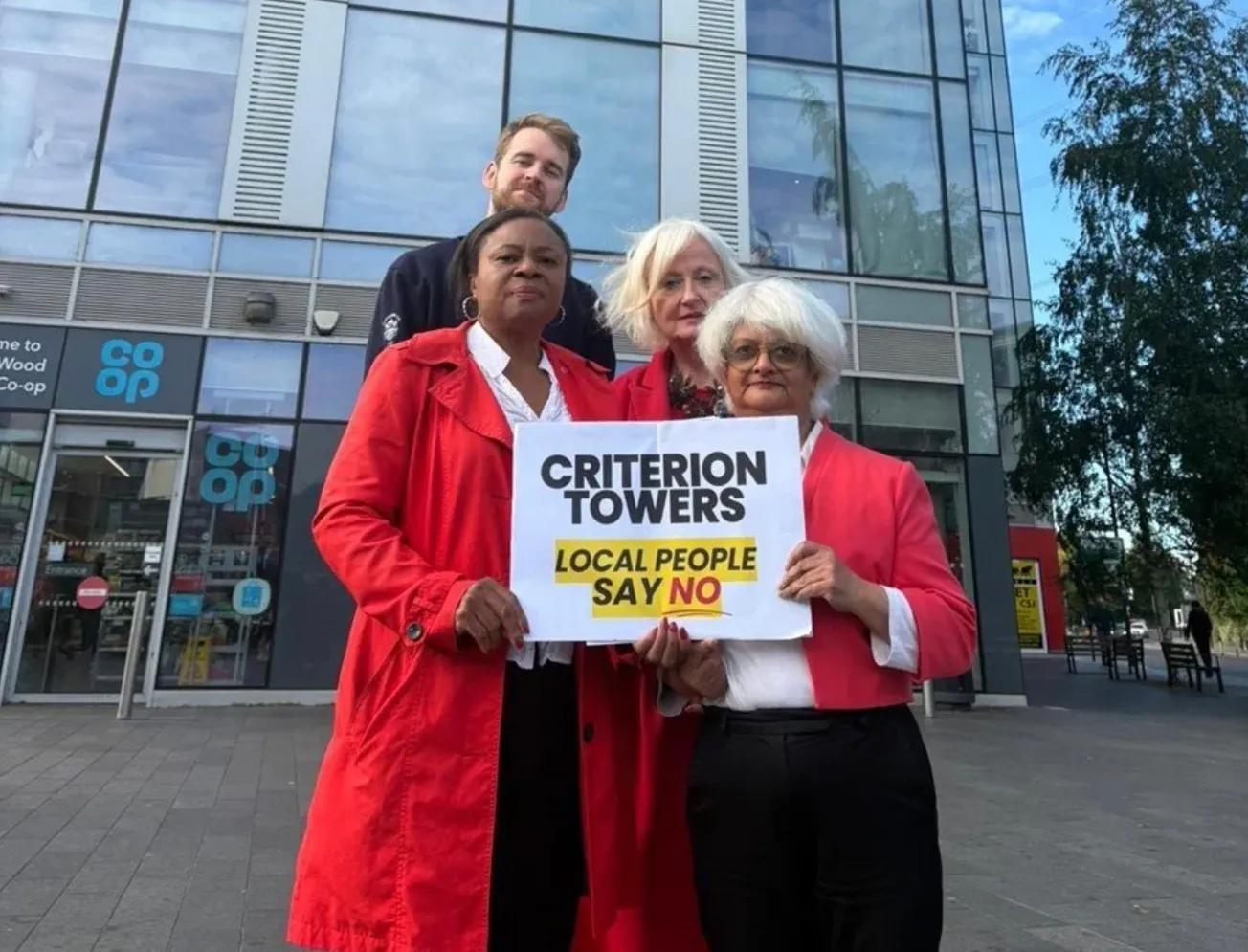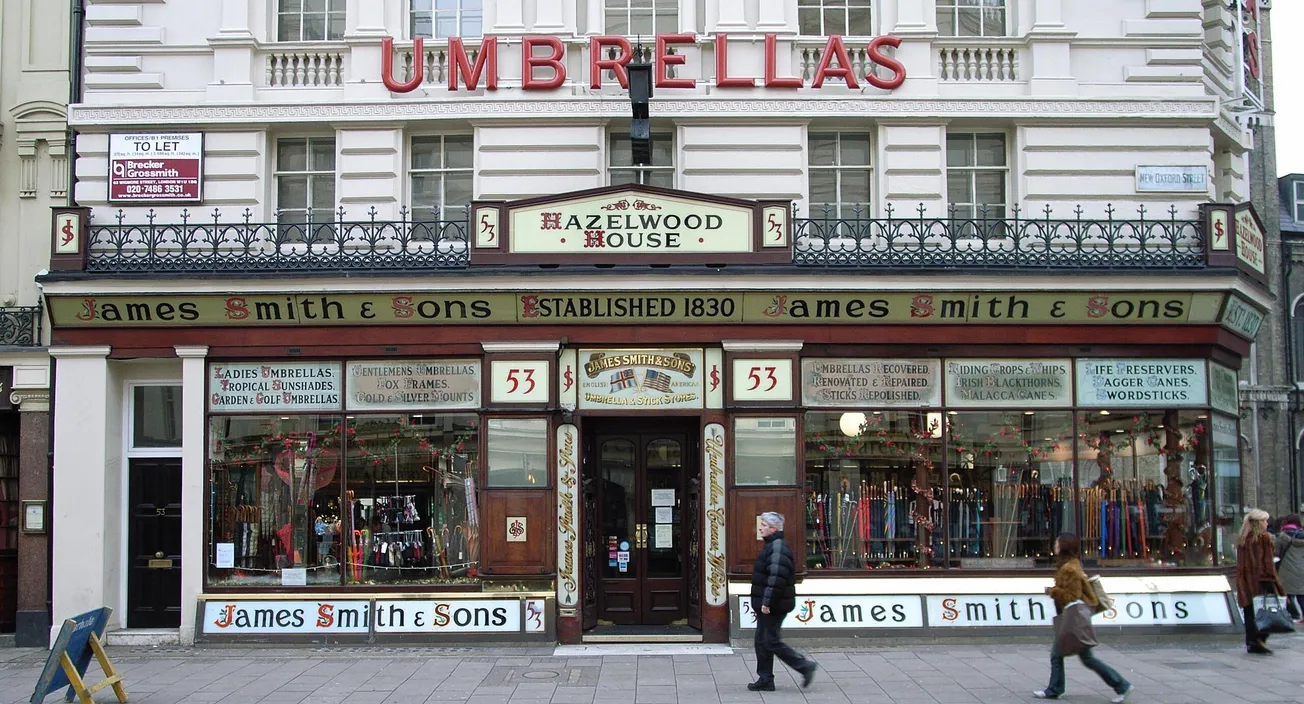Three knocks at the library door. “Sir…Sir?” Then the soft tread of the butler’s shoes on mahogany floorboards, and a calmly proffered cocktail glass, within which a skilfully carved bark shaving skewers a solitary olive. He accepts it gratefully. He always knew this day would come. It was only ever a waiting game — but they didn’t half make him wait. Outside, the engine is running. With a subtle head-tilt of acknowledgment to the white-gloved chauffeur he settles onto newly-upholstered seats and considers the mini-fridge. Perrier-Jouët: could be worse. Finally, privately, behind the slick back screens of his aviators, a single tear leaves his eye. Finally, finally…
When I pose the above scene to experts at the Ealing Beaver Project, I’m resolutely informed this is not how the proud reintroduction of the Eurasian beaver to the UK capital actually went down. Which feels remiss; after all, it’s been 400 long years since beavers were hunted to extinction in Elizabethan London, forced into Britain’s hinterlands to live the sort of half-life all those Hackney-to-Margate transplants are always overcompensating for (unfortunately, they were then killed there too, until no native beavers remained).
There should have been pomp and ceremony upon their return, Beatles-mania-style, if only to reacclimatise the creatures. The London they returned to is barely recognisable; the last major event the beavers were around for was the Gunpowder Plot. By the time the Great Fire ripped through the city, London was already bereft of beavers. Time can be measured in PB (peak beaver) and AB (after beaver).
Instead there was, presumably, just a cage in a van. Oh well, it’s the destination that matters and all roads lead to one place: London.
‘Beavers are back’
I’d originally envisioned this piece as part of The Londoner’s new series: My first year in London. The 2023 class of Ealing’s beavers, reintroduced as part of nationwide rewilding efforts, have been in the city for more than a year now. I was hoping to grab a coffee with one of them and ask how they’d been finding things: travails in the housing market, bad landlord experiences, that kind of thing. Alas, Sean McCormack, Ealing’s self-styled beaver-keeper (alternate job title: volunteer at the Ealing Beaver Project) tells me any interactions have to be carefully monitored. Despite their new urban existence, these are very much wild animals. So are London’s landlords, I think.
McCormack was one of several key players in getting the beaver project off the ground. Originally, the grand plan didn’t concern beavers at all, but water voles. Water voles are Britain’s fastest declining mammal. They used to live here, at Paradise Fields in Ealing, but the habitat degraded over time. McCormack consulted Elliot Newton, who had reintroduced water voles to Kingston, but the two men realised Ealing wasn’t yet ready for the water vole (excessive tree coverage, if you’re interested).
Beavers, however, are what’s known as a keystone species: they maintain the open, sunny habitats in which other species, like water voles, thrive. As such, if could you reintroduce beavers to Ealing, you’d lay the groundwork for water voles. And there was an obvious bonus to this strategy: you’d have beavers in Ealing.

The Paradise Fields site, bordered by a 24-hour McDonalds, is a kind of Jungle Jim’s for aquatic rodents. It’s four times the recommended size of what a beaver habitat would need to be, with a large pond in the middle and a series of specialist beaver-proof gates around the perimeter to stop them getting out. The beavers here came from Scotland, specifically Tayside, where a large “unlicensed” beaver community has grown since some were illegally introduced there in 2006.
Nearly 1000 Tayside beavers have been causing great upset in farming communities, blocking up drainage ditches, damaging crops, the works. Despite a government-led ‘population control’ drive in recent years (tragically leaving us 200-odd beavers down), another measure of dealing with the beavers is resettlement. Luckily for Ealing’s beavers, they drew the latter straw. It was off to the Big Smoke.
Initially, there were five of them. The first thing you need to know about the mother, Willow —and forgive my commenting on a woman’s weight —is that she’s massive: 30KG of pure heft (the size of an athletic labrador or an obese springer-spaniel, McCormack says). The dad, Woody, is not only notably smaller but also something of a toyboy at several years her junior, and then there’s the adolescent daughter. Two kits were born in Ealing, so now the beaver household now numbers seven in total; project staff are currently hoping more little ones will emerge from the lodge.
This article was published by The Londoner, a new quality newspaper delivered via email. Four days a week, we send you a carefully chosen story, plus our best scoops, investigations and recommendations. We prioritise quality over quantity and everything we send is in your inbox - you don't need to click on any links. To give us a try, join our free mailing list below.
The family’s arrival in London, McCormack points out, is only bringing forward an inevitability. Wild beavers are already in north Kent, camped out in striking distance of the capital, plotting their long march in, Wat Tyler style. In the coming years they will move up streams and across rivers into London, which is why the project in Ealing is less about starting the process of re-populating London with beavers, and more about showing people that it will work just fine when they eventually do come en masse, of their own accord.
I’d imagined this wasn’t really an issue — everyone loves beavers, those cuddly little creatures! But the more I learn about the trouble up in Scotland and the whole ‘government-ordered-cull’ business, the more I realise that maybe there’s the potential for a greater degree of friction between beavers and humans than one would assume. Better to iron out the kinks now because the way McCormack tells it, the Kentish beavers are closing in via a pincer movement as we go about our trivial urban business, unaware.
“Beavers will be here in time,” McCormack says. Am I just imagining the maniacal glint in his eye? “They’re going to colonise London in time. They’re coming. Beavers are back.”
Beaver-feaver
One of the key aims of the project then, was to show people that Londoners and beavers can live happily side-by-side. This is beaver PR 101. Of course, across Europe, especially in progressive German cities like Munich and Berlin, beavers have been living in the heart of urban areas for 70-odd years. They’re all over the u-bahn. But Londoners, beaver-less for almost half a millennium, don’t have these experiences: McCormack wants to demonstrate there’s nothing to fear.
Other aims are more practical, like proving that beavers, as “ecosystem engineers”, will be able to help the city in its urban flood mitigation efforts — potentially with huge savings. McCormack cites an example from the Czech Republic where a large-scale, million-pound engineering project a local authority had been planning for the best part of a decade was scrapped after a family of beavers moved in and did it for them. Here in Ealing the five-strong team have already made headway on this front. As McCormack and co have a five year lease on the site, being able to prove material flood mitigation success in that timeframe will be one of several markers of the project’s success.
Inevitably, there will also be tough moments. Beavers are social rodents, meaning only the mum and dad breed while they live as one family. In order for Willow and Woody’s daughter ,now three years-old, to find a mate, McComarck and his team will have to allow her to leave Paradise Fields and start afresh elsewhere; bringing another male into the habitat would expose it to too great a risk (the highest cause of death among beavers is attack by other beavers). Last winter his team did locate her an eligible bachelor in Wales, but she couldn’t be trapped to sort out the relocation. They’ll try again this winter. He’s adamant, though, that any beavers leaving this site should go back into the wild, not another enclosure. Croydon it is then.
McComarck is far from alone in working on this project, it’s been a huge team effort involving tons of volunteers, exports and an assortment of local groups. But it is interesting to hear how beavers are woven so inextricably into his own life story.
He’s a trained vet, and during his undergrad degree he wrote a thesis on the possibility of reintroducing beavers into the UK. That was 2002, the same year — by chance — that beavers were reintroduced into the UK, by the Kent Wildlife Trust in a controlled farm enclosure. Then McCormack moved to Vancouver as an international semester where he set eyes upon the famous Beaver Lake in Stanley Park (“I had that moment of like, actually, beavers are everywhere” he says. I nod sagely in agreement). After that he returned to Britain and worked at a zoo in Kent, where he came across the Wildwood Trust and their beaver reintroduction efforts.

Now qualified, McCormack got into a clinical vet practice, but found himself burning out due to the lack of work-life balance by 2016. After switching careers he began taking more time to explore Ealing, where he was living, heading out to the local green spaces with only his camera. On a whim he set up the Ealing Wildlife Group and started doing bat walks, for which there was huge uptake: 400 people expressed interest straight away. Bats were eventually replaced by voles, then beavers as the objects of his obsession. Now… paradise. Or Paradise Fields.
When the Londoner first visited Paradise Fields last year, we saw signs of beaver life, but no actual beavers. It was off-season. It was obvious where the beavers had created a burrow, under the water level into the bank, skilfully placing a wigwam of twigs on top, and packing it with mud. They’d already “reinvigorated the pond”, McCormack told us. Fascinating though it was to see the beaver wigwams and pond renovations, what we really wanted to do was see a beaver. So we waited. About six months, in fact, until finally the stage was set.
Waiting for McCormack by the beaver-proof gate were the Friends of the Grand Union Canal, who’d arranged a private 7pm viewing. I was the tagalong. After a little bit of backstory on the project, McCormack led us to the viewing platform, armed us with binoculars, and we took formation. Time began to pass. Quite large quantities of the stuff in fact. Not quickly either; time was really dragging its heels, really running down the clock.
To be honest, by half eight I was mentally toying with the possibility that McCormack was on the blag, luring gullible nature types out to a random clearing near a McDonalds at £30 a pop , then throwing his hands up with feigned shock and disappointed at nine on the dot when the beavers fail to show. Better luck next time…

By about quarter to nine I was approaching something close to delirium. Beaver-feaver. Like a blotch on the desert horizon taking the appearance of a shimmering oasis in the eyes of the sun-stroked, dehydrated traveller, all about me took rodent form. Spirographs of branches spun into nightmarish beaver heads. Wispy-white beavers floated in the skies above. The Friends of the Grand Union Canal metamorphosed, growing fur coats and scaled tails. Then I caught a glimpse of myself on the front camera of my phone, and I’m not making this up… I had two large orange incisors protruding from my jaw. By five to nine I was pure beaver: beaver blood, beaver sinew, beaver soul.
But remember…these guys had to wait 400 long years before they made it back to London, suffering that tedious wilderness period in Tayside of all places (they don’t even have a Gail’s in Tayside) so I guess it’s not outrageous for them to make us wait 90 minutes. At last a ripple of muted excitement passed through the group. Something was stirring beneath the water. Binoculars were drawn. Whispered confirmations. Did you? — yes, yes! And I did too. Gliding through the algae with ease, like a Japanese sword through butter, I caught maybe 15 seconds or less, just a face protruding from the water, but it was enough .

Comments
How to comment:
If you are already a member,
click here to sign in
and leave a comment.
If you aren't a member,
sign up here
to be able to leave a comment.
To add your photo, click here to create a profile on Gravatar.

